"How to" guides
We are drafting a set of “how to” guides to make it easier for residents to enhance their property and contribute to the special character of the Lakes Estate.
The guides are based on the Conservation Area Character Appraisal and the experience of residents who have recently undertaken improvements. Please let us know if you have any tips to share – What worked well? Where did problems arise? Where did you find specialist materials?
Guide No 2. Windows
- What is special?
- Current issues
- Design inspiration
- How to get it right
- Layout
- Shaped frames
- Opening and non-opening windows use the same profile for the frame
- Glazing bars
- Double-glazed units
- Fitting the glass into the frame
- Surface appearance
- Materials
- Sustainability and Energy Efficiency
- Your Stories
- Replacement Windows
- Renovated Windows
- Top tips
Layout
When casement windows or sash windows are replaced, it is important to replicate the features of the original windows that give the window its distinctive look.
The layout should match the original, and the width of each part of the frame should also match the original.
Shaped frames
The main window frame may be shaped, eg. with an arched top. Some companies suggest that replacement windows should have a frame and double glazing that is rectangular, and mimic the arched shape of the original frame by adding ‘plant-on’ shapes on the surface of the glass. It is very difficult to make these ‘plant-on’ sections look as if they are an integral part of the window.
The curve at the top of windows and the profile of each section of the frame should match originals for the style of house.
Opening and non-opening windows use the same profile for the frame
Replacement Edwardian windows should have the same size woodwork for all windows, so the frames should look exactly the same whether the window is an opening one or not. The ‘rails’ (horizontal bars) and ‘stiles’ (vertical bars) of the fixed windows are the same size as the rails and stiles in opening windows (referred to as ‘equal sight lines’).
Modern windows tend to have different sizes of rails and stiles in the fixed and opening windows. ‘Unequal sight lines’ such as this do not match the appearance of original windows.
Double-glazed units
Fitting the glass into the frame
Surface appearance
The frame joints on traditional windows are not visible in normal circumstances. In any event, they are never mitred joints but always mortice and tenon (the sides of the frames extend to the top and bottom of the window and the horizontal rails fit between these).
Original windows were manufactured from wood that was planed and sanded to be smooth and then painted. Replacement windows should have a painted finish; this is not totally smooth but shows some brush strokes.
Materials
Replacement windows are noticeable when they are made of UPVC.
Enfield Council’s position on planning applications for UPVC windows in the Lakes Estate is that:
“Proposed replacement windows with UPVC windows by virtue of their materials and appearance would not preserve or enhance the character of the Lakes Conservation Area having regard to Local Plan Policies CP 30 and CP 31, Development Management Document Policies DMD 37 and DMD 44 as well as the Lakes Conservation Area Character Appraisal.”
Sustainability and Energy Efficiency
In “Heritage at Risk – Conservation Areas” (2000), English Heritage addressed the questions: “What’s wrong with plastic windows?” and “Won’t they save money and energy?” They advise that repairing existing timber windows rather than replacing them with UPVC is not only a greener solution but makes better economic sense. Owing to the large amount of energy needed to make UPVC windows, it will take 60-100 years for this to be compensated for by any saving on heating. In addition, the loss of authentic windows can significantly reduce the market value of a property.
Historic England’s guidance note “Draught-proofing windows and doors” provides advice. Draught-proofing is one of the most cost-effective, and least intrusive, ways of both improving the comfort of occupants and reducing energy use, with little or no change to a building’s appearance.
https://historicengland.org.uk/images-books/publications/eehb-draught-proofing-windows-doors/
https://historicengland.org.uk/advice/your-home/saving-energy/older-houses/sash-windows/
Your Stories
We contacted several residents with new windows and asked if they would share their stories. An alternative approach is refurbishment and two residents told us of their experiences.
If you would like to share your experiences to help other residents please let us know. Email:
Replacement Windows
Adrian, who has lived in Old Park Road for over 20 years, as has Denise from Grovelands Road, Kate from Lakeside Road and Beverly from Harlech Road, all agreed to share their experiences. Adrian. Denise and Kate used Ayrton Bespoke (ayrtonbespoke.com) and Beverly used local builder K.G. Croft (www.kgcroft.co.uk)
Adrian had new bay windows fitted three years ago. The reasons were the usual ones: windows jamming; level of noise; loss of heat: draughts. He obtained quotes from four companies. Denise had a basic renovation of her windows when she first moved in to "keep them ticking over". She got a quote from a company some years later for a window replacement, but thought it expensive and never proceeded. More recently she was at a friend's house, saw her windows and decided to call the company for a quote. Beverly had replacement French windows fitted four years ago. The large expanse of her single-glazed doors meant the room was cold and difficult to heat. In addition, the bottom panels were wearing and she decided to replace the doors rather than spend more money maintaining them.
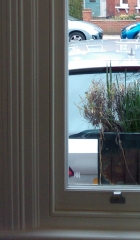 Adrian wanted an exact copy of the original windows and architrave. "I was very keen that the new windows should support the existing look and feel of the area".
Adrian wanted an exact copy of the original windows and architrave. "I was very keen that the new windows should support the existing look and feel of the area".
Denise also wanted exact copies of her front windows which are unusually-shaped casement windows.
Adrian reported that after their first visit Ayrton produced engineering drawings of the installation which were an integral part of the planning application. Denise was very impressed by her technical drawings and the fact that the designer revisited to check and re-measure. Every section of moulding for the front windows was made to be an exact replica of the originals.
This is a major undertaking and residents thought it important that they should feel comfortable with the design process, being guided through the procedure, but still very much part of it. Kate appreciated her company's assistance with the planning application as part of the service.
Design details
Denise had stripped the original fittings in the hope of reusing them but when this proved impossible she found some similar by Samuel Heath (http://www.samuel-heath.com/).
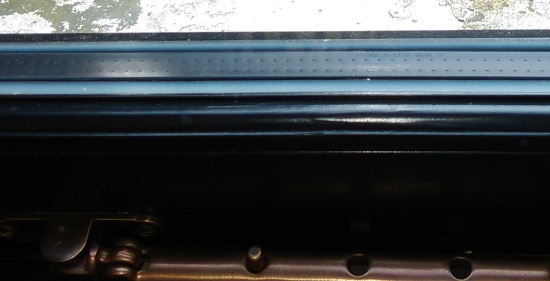
It was also possible to source a Pilkington patterned glass to replace the original glass in the toilet window. Her paintwork was matched to a Farrow and Ball colour and the internal spacer bars are the same colour rather than aluminium.
Beverley was concerned about the stained glass panels at the top of the windows, but in fact the original panels were sandwiched between two panes of glass in the new windows to triple glaze that section.
The process
All residents reported on the attitudes of their workmen such as being respectful of the rest of the house, protecting carpets and doing their best to keep mess to a minimum and clearing up on a daily basis. Trust was important as was the ability to talk to company representatives throughout (and for them to listen and understand).
"I was happy to have a morning conversation with the team of fitters and then leave them alone in the house. They were completely reliable and trustworthy". Denise
"The workmen were clean and tidy and completely trustworthy". Beverley
Adrian says he spent more money on the windows than on any part of the house but it was absolutely worth it and has made a significant difference to the house. "They are effectively the original windows but better. The house is quiet and draught-free and the crafted windows are a thing of beauty which will last a lifetime."
Renovated Windows
When Kara’s family first moved to Old Park Road they had some basic renovation work done on the windows, but wanted some upgrading two years ago, particularly on the front windows. Bryony and her family have lived in Lakeside Road for thirty years and, like Kara, wanted to address the issues of noise and loss of heat in addition to remedial work on the windows. Having spoken to neighbours for recommendations, Kara chose The Sash Window Man (http://www.thesashwindowman.com/) from the four firms who supplied quotations. Bryony went with Ventrolla (https://www.ventrolla.co.uk/), a firm with a long history of refurbishment. (Bryony has also used GMS Joinery in Fortis Green to make new casement windows.)
The process
Kara had thought they would need replacement double-glazed windows, not least because the old ones were so difficult to open and draughty. However, on inspection, it was found that all but one of the sashes could be repaired, restored and draught-proofed. Bryony has a mixture of casement and sash windows. As well as renovating the sashes, draught-proofing was fitted both to sashes and casement windows.
The work involves removing the sashes from the box frame, removing excess paint to facilitate opening, replacing sash cords and rebalancing the weights. Tenon joints and timber defects were repaired and a draught-proofing system and new beads installed. Window furniture was added for both aesthetic and security reasons.
At the time of the renovation Bryony also had the Ventrolla Sash Removal System fitted which enables the easy and safe removal of upper and lower sashes without altering the appearance or character of the window. This makes repainting much easier.
Timescales and workmanship
Kara had 17 sashes done and work started about six weeks after the quotation. It took a few days and the workmen were very painstaking, efficient and tidy. She was delighted with the work. She said after service was excellent with any queries instantly dealt with. Bryony had her windows done in two sessions over a period of three years and, after original site visits and discussion, the work took about two days in both cases. She was full of praise for the men who did the work and cleared up afterwards in an exemplary manner. (Ventrolla is a franchise and different operatives work in different areas.)
Advantages
Although The Sash Window Man will make and supply replacement sashes if the windows are beyond repair, they do try to conserve older windows. Indeed the MD writes a column for the Sunday Times on the subject. It is very cost effective compared to window replacement and, because the windows are removed internally, scaffolding is not required. It also avoids the need for planning permission and minimises redecoration. Most important of all, it conserves the Edwardian woodwork.
Top tips
Our residents' top tips
- Renovation may be an option because the quality of wood was so good when our houses were built.
- Get quotes and make sure of the specifications
- Attention to detail is all important: be sure to get detailed drawings; leaving out just one of the design details may result in the windows not looking quite right.
- Renovate or replace over a number of years to spread your investment.
- Find a company which listens to your requirements and shows how they can meet your needs.
- Find out what experience the company has of replacing windows in conservation areas and producing windows that conform to all the criteria.
- Trust and reliability are important - workers are going to be in your house and the windows will be removed for a short while.
- Consider any after service, guarantees and FENSA certification offered.
- See what you are getting – examine fixings and finishes, type of glass etc
- Check the need for planning permission
Would you like to share your Top Tips here?
We do not recommend particular companies but if there are tradespeople you have used we can share their contact details.
All Photos reproduced from Lakes Estate Conservation Area Character Appraisal 2010 & 2015 courtesy of Drury McPherson Partnership. Additional photos are with permission of owners.
Download a printable version of this guide






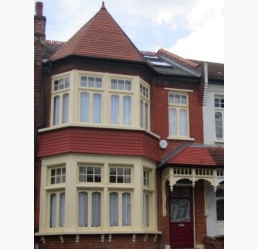
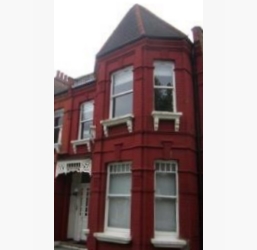
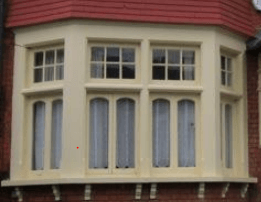
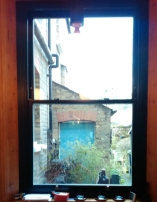
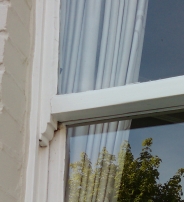
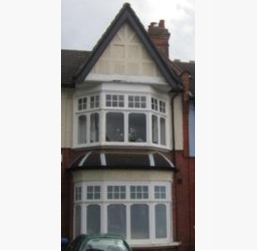
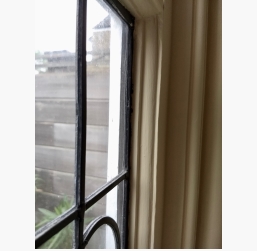
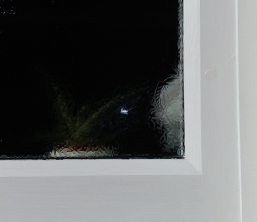
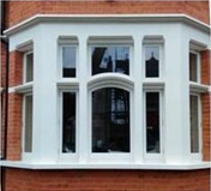
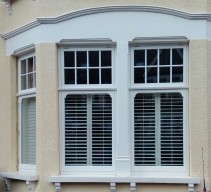
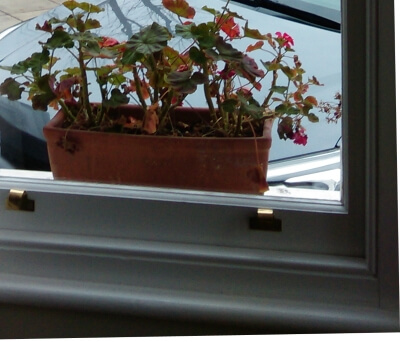 Kara says that, although the windows are not double-glazed, the draught-proofing system has proved very effective and cuts down on both noise and dust ingress. In addition to having her windows draught-proofed, Bryony asked Ventrolla to use the same system on the inner French doors behind her front door. The result is that in winter the hall, which was one of the coldest areas in the house, is now warmer than the central morning room! The other high point is that the sash windows she struggled to open can now be lifted up with one finger.
Kara says that, although the windows are not double-glazed, the draught-proofing system has proved very effective and cuts down on both noise and dust ingress. In addition to having her windows draught-proofed, Bryony asked Ventrolla to use the same system on the inner French doors behind her front door. The result is that in winter the hall, which was one of the coldest areas in the house, is now warmer than the central morning room! The other high point is that the sash windows she struggled to open can now be lifted up with one finger.